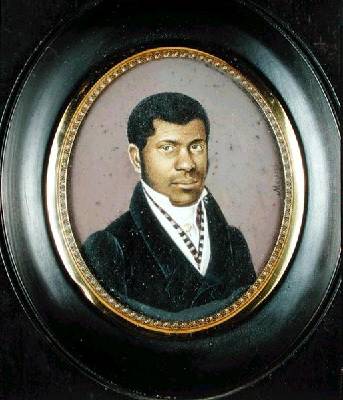In 1996, Pope John Paul II bestowed the title of “Venerable” on Pierre Toussaint. Two years later, Pierre Toussaint Square was named for him. This man, who was brought to New York as a slave in 1787, may soon become the first Haitian saint.
Toussaint was raised as a slave in the household of Jean Berard, a family of devout Catholics who taught him both reading and writing. When the family fled the revolution on their island, they brought Pierre and his sister Rosalie with them. Pierre was immediately apprenticed to a hairdresser, and went on to become one of the best in the city. At that time, wealthy women would spend $1000 a year on their hairdos, so Toussaint was able to make very good money. But what he did with his money is more extraordinary.
When his master died, Toussaint supported his mistress. He bought his sister’s freedom rather than his own, so that she could marry and bear free children. He bought his future wife’s freedom and helped many other slaves to buy theirs. He donated money to his beloved Church, to ministers and nuns, to orphans white and black, and to countless other causes. Not only did he donate money, but he also visited the sick and nursed them during yellow fever epidemics when no one else dared to.
Upon his death in 1853, the city mourned him, the papers eulogized him, and the great Revolutionary leader General Philip Schuyler said of him, “I have known Christians who were not gentlemen or gentlemen who were not Christians--but one man I know who is both--and that man is Black.”

